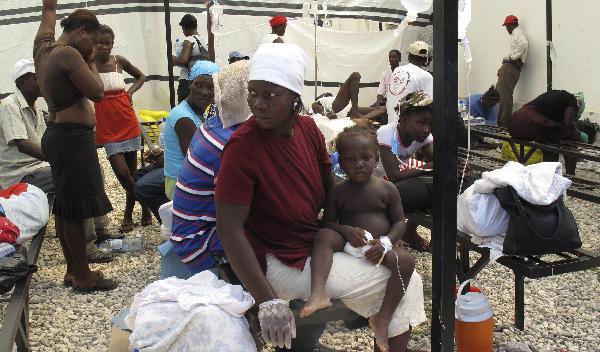Key facts about cholera
Cholera is an acute diarrhoeal infection caused by ingestion of food or water contaminated with the bacterium Vibrio cholerae. Every year, there are an estimated 3–5 million cholera cases and 100 000–120 000 deaths due to cholera. The short incubation period of two hours to five days, enhances the potentially explosive pattern of outbreaks.
Symptoms
Cholera is an extremely virulent disease. It affects both children and adults and can kill within hours.
About 75% of people infected with V. cholerae do not develop any symptoms, although the bacteria are present in their faeces for 7–14 days after infection and are shed back into the environment, potentially infecting other people.
Among people who develop symptoms, 80% have mild or moderate symptoms, while around 20% develop acute watery diarrhoea with severe dehydration. This can lead to death if untreated.
People with low immunity – such as malnourished children or people living with HIV – are at a greater risk of death if infected.
History
During the 19th century, cholera spread across the world from its original reservoir in the Ganges delta in India. Six subsequent pandemics killed millions of people across all continents. The current (seventh) pandemic started in South Asia in 1961, and reached Africa in 1971 and the Americas in 1991. Cholera is now endemic in many countries.
Vibrio cholerae strains
Two serogroups of V. cholerae – O1 and O139 – cause outbreaks. V. cholerae O1 causes the majority of outbreaks, while O139 – first identified in Bangladesh in 1992 – is confined to South-East Asia.
Non-O1 and non-O139 V. cholerae can cause mild diarrhoea but do not generate epidemics.
Recently, new variant strains have been detected in several parts of Asia and Africa. Observations suggest that these strains cause more severe cholera with higher case fatality rates. Careful epidemiological monitoring of circulating strains is recommended.
The main reservoirs of V. cholerae are people and aquatic sources such as brackish water and estuaries, often associated with algal blooms. Recent studies indicate that global warming creates a favourable environment for the bacteria.
 0
0 








Go to Forum >>0 Comments